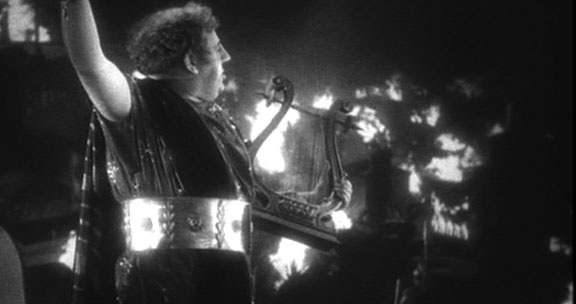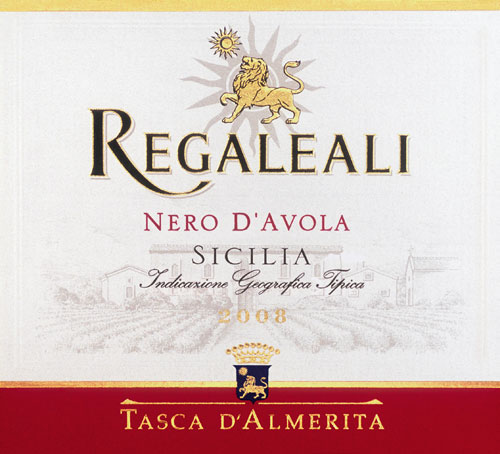This guy?
 |
| Teenage Wasteland! |
No? Maybe this guy?
 |
| "Ambassador Spock will be joining us at our next wine tasting." |
Nah…how about these guys?
 |
| Now we're talking! |
In Italian, “Nero d’Avola” translates as “The Black [Grape]
of Avola” – Avola being a town at the southernmost tip of the island of Sicily
near the city of Syracuse. The varietal is less commonly referred to as “Calabrese”
– meaning “from Calabria,” the Italian province straight across the Strait of
Messina from Sicily.
Nero d’Avola grows best in hot, Mediterranean climates.
Sicily certainly falls squarely into that definition. Grapes that thrive in
warm weather regions tend to yield wines with stronger fruit flavors and higher
alcohol content, and Nero is no exception. Its dark, tannic juice has long been
sought as a blending grape to add depth and color to lighter wines on the
mainland. Advances in winemaking technology have improved the single-varietal
quality of these grapes markedly. Sicily is currently third in overall
production among Italian wine regions – with the skyrocketing production of
Nero d’Avola bolstering the already ample yield of the ubiquitous Marsala
grape.
What’s Nero d’Avola taste like? The best parallel I’ve seen
out there is Australian Shiraz, although I find The Black to be more tannic in
general. As with most high-tannin wines, it usually takes a couple of years for
the tannins to calm down and mesh with the other flavors, so if you’re looking on
the shelves of your local quality wine retailer, don’t be afraid to pick up a
bottle with a couple of years under its cork. Nero d’Avola also has aging
potential, so if you find one you enjoy, don’t be afraid to stash a few bottles
in the ol’ cellar for a little while. Nero d’Avola is also sometimes made into
rosé for summertime consumption.
Sicily, being the volcanic island that it is, has great
variation in altitude and soil content with microclimatic regions all over the
place. The flavor you’ll find can vary markedly from producer to producer and
from town to town. You may need to do a little independent research to see
where your palate’s sweet spot is with this grape. (But that’s half the fun, ain’t it?)
It also can pair with a broad variety of foods – from earthy vegetables like
roasted eggplant to tomato-based pasta sauces to lamb and chili. Here are a few
that I enjoyed recently:
Poggio Anima 2010 “Asmodeus”
Nero d’Avola – Asmodeus, as any owner of the original Dungeons and Dragons
“Monster Manual” can tell you, is the Lord of Hell. I doubt the terroir for
this wine is quite that intense, largely because brimstone is not part of this
wine’s big, bright flavor. My first impression was of blackberry and cherry on
the nose and palate. It’s medium-to-full body, but it’s not as “sticky” as a
similarly bouqueted Shiraz would be. Instead, the finish leans out, turning
first to a nice tannic dryness and then into that mineral character that many Italian
wines possess. I thought it was a wonderful food wine. We had this next to a
penne pasta with wilted arugula, diced tomatoes, and goat cheese, topped with
roasted pork (recipe
here). There are worse wines to accompany any number of sins, gluttony being
the top of the list. $13.
Regaleali 2008 Nero
d’Avola – Under other, more blindfolded circumstances, I might have
mistaken this for a Bordeaux. (And certainly more like a Bordeaux than a Rhone,
which I’d have expected with a “Shiraz-like” grape.) My first thought on spinning this was, “Wow.
Funky!” There’s a real whiff of earthiness on the nose, coupled with a nice bit
of cherry. I’d call it medium bodied, in line with the aforementioned French
doppelganger. Good dark fruit on the tongue with some gradually-building
tannins. There’s plenty of length on the
tannic, chalky finish. We had this with leftovers from the same meal we made
for the Asmodeus. The flavors of the pasta had blended into a nice yumminess,
and the extra earthy characteristic in this wine made it an even better
complement. Another great, though very different, food wine. $15.
Feudo Arancio “Stemmari”
2010 Nero a’Avola – The least expensive ($8) and most
straightforward wine
of this particular sampling. It’s a simple, uncomplicated table wine – and this
is not a fault in the slightest. The major flavors are cranberry and cherry,
both on the nose and on the palate. The real winning piece of this wine is the
balance. As I said, there’s nothing complex here – but the flavor, minerality,
and tannin are in real harmony, making this a very pleasant and food-friendly
quaff. We had this alongside a rustic bean, barley, and wilted green soup, and
I thoroughly enjoyed the pairing. (I also discovered that our going-to-seed
lettuces made great soup greens!)
If you’re a fan of sturdy, fruity wines and you’re looking
for a changeup this weekend, trundle down to the end of the “Other Italian
Wines” section and snag a couple of these. After all, once you go Black…



No comments:
Post a Comment